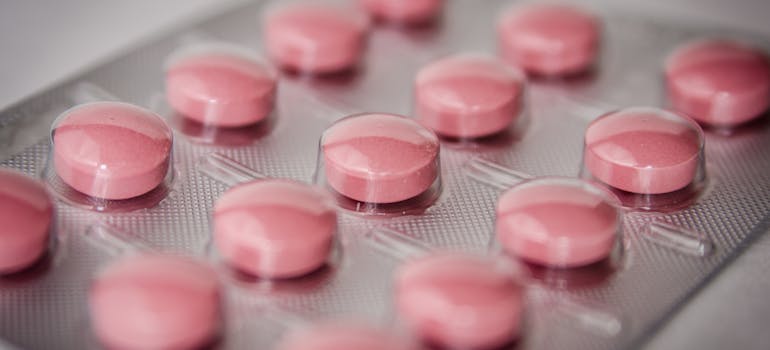Do you know how stimulants and depressants affect your brain differently? It’s key to understand this, especially if you or someone close to you is struggling. Stimulants pep you up, while depressants calm you down. But there’s a thin line between use and dependency. If you’re in West Virginia and facing issues with these substances, know that rehabs in WV, such as Harmony Ridge, are ready to help. We want to explain the crucial difference between stimulants and depressants, offering insights that could be a game-changer for you or a loved one. Stick around as we dive into what makes them distinct and how to approach them responsibly.
What Are Stimulants and Depressants?
The world of psychoactive substances can be complex, yet understanding the basics can make a big difference. Two key players, stimulants and depressants, affect our brains and bodies in very different ways. Let’s take a closer look at these substances, exploring how they work and why knowing the difference matters for our well-being and health.

Stimulants: Enhancing Brain Activity
Stimulants are powerful agents that increase brain activity, leading to improved alertness, energy, and focus. They achieve this by elevating the levels of neurotransmitters like dopamine and norepinephrine, which in turn can enhance one’s mood, increase heart rate, and elevate blood pressure.
Stimulants, commonly used to treat attention deficit hyperactivity disorder (ADHD) and certain sleep disorders, have a significant role in medical therapy. However, their ability to boost energy and concentration makes them susceptible to recreational use and potential misuse. This underscores the importance of substance abuse treatment in WV, where professionals can provide guidance and support for those who may struggle with stimulant misuse, highlighting the importance of understanding and respecting their power.
Depressants: Slowing Down Brain Functions
In contrast to stimulants, depressants reduce brain activity, which can lead to feelings of relaxation, decreased anxiety, and sedation. By increasing the activity of neurotransmitters that promote calmness, such as GABA, depressants help manage conditions like anxiety, insomnia, and other stress-related disorders.
Alcohol, benzodiazepines, and certain sleep aids fall into this category, offering therapeutic benefits when used correctly. Yet, the fine line between use and abuse is thin, as the soothing effects of depressants can lead to dependency, highlighting the importance of long term drug rehab WV for those who find themselves struggling. Such programs provide the extended support and treatment needed to overcome dependence, underscoring the need for cautious and informed use.
How Stimulants Affect the Body
Stimulants activate our brain and body, enhancing alertness, energy, and mood by increasing neurotransmitter levels like dopamine. This boost can improve focus and attention, which is beneficial in conditions like ADHD, but also poses a risk for addiction as the brain begins to crave enhanced well-being.
Physiologically, stimulants raise heart rate and blood pressure, preparing the body for intense activity. While this can be advantageous, it also strains the body, potentially leading to health complications with excessive use. Understanding these effects underscores the need for careful, supervised use to harness benefits while mitigating risks.

How Depressants Affect the Body
Depressants slow brain activity, increasing neurotransmitters like GABA to induce relaxation and calm. This effect is beneficial for conditions with excessive brain activity or anxiety, providing a break and easing the mind and body into a relaxed state.
The result is not just a feeling of relaxation but a sedative effect that reduces anxiety and tension and aids sleep, similar to the relief experienced in a warm bath. However, this calming effect affects the whole body, potentially lowering the heart rate and blood pressure. While beneficial under certain conditions, it highlights the need for responsible use and medical supervision to ensure safety and effectiveness.
Common Examples of Stimulants and Depressants
Exploring the world of stimulants and depressants brings us to a diverse array of substances, each with its own set of effects and uses. From the caffeine in your morning coffee to prescription medications and beyond, it’s important to recognize how these substances influence our lives. Below, we’ll highlight some common examples of both stimulants and depressants, shedding light on their legal status, the potential for misuse, and the resources available for those seeking help.
Stimulants Examples
Stimulants range from everyday substances to those that are more strictly controlled. Here are some famous stimulant examples:
- Caffeine: Found in coffee, tea, and many soft drinks, caffeine is the most widely used stimulant worldwide.
- ADHD Medications: Prescription drugs like Adderall and Ritalin to improve focus and control impulses.
- Cocaine: An illegal drug known for its potent and risky euphoric effects.
For individuals grappling with issues related to stimulant use, especially substances like cocaine, support is available through programs such as cocaine rehab in West Virginia, providing a pathway to recovery.
Depressants Examples
While these substances can offer significant relief when used appropriately, they also carry a risk of dependence and addiction. Depressants that are legally available include:
- Alcohol: A legal substance consumed for its relaxing effects but with a significant risk of abuse.
- Benzodiazepines: Prescribed for anxiety and insomnia, these medications must be used under careful medical supervision due to their addictive potential.
Facing the challenge of dependency on these substances can be daunting. However, alcohol rehab centers in WV and benzodiazepine rehab centers offer essential support and treatment options for those seeking to regain control over their lives. Understanding these examples helps highlight the importance of cautious and informed substance use, encouraging individuals to seek help when needed.

Side Effects and Risks of Stimulants and Depressants
Understanding the potential side effects and risks of stimulants and depressants is crucial for their safe and responsible use. While these substances can offer significant therapeutic benefits, their misuse comes with considerable health risks. Here, we delve into the specific side effects associated with each category, emphasizing the importance of rehabilitation services for managing and mitigating these risks.
Stimulant Risks
Stimulants, known for boosting energy and alertness, can also lead to several adverse effects, especially when misused. Key concerns include:
- Increased Blood Pressure and Heart Rate: Frequent use of stimulants can strain the cardiovascular system, increasing the risk of heart problems.
- Risk of Addiction: Stimulants can cause euphoria, which can lead to dependency and make it challenging for people to function normally without them.
- Mental Health Issues: Anxiety, paranoia, and, in some cases, psychosis can arise from chronic stimulant misuse.
- Sleep Disturbances: Stimulants can disrupt normal sleep patterns, leading to insomnia and other sleep-related issues.
The significance of stimulant rehab and addiction rehab centers in this context cannot be overstated. These facilities offer comprehensive treatment programs tailored to help individuals overcome stimulant addiction and reclaim their health and well-being and that include:
- detoxification
- counseling and therapy
- support groups
Depressant Risks
Depressants, while useful for inducing relaxation and sleep, pose their own set of risks when misused:
- Drowsiness and Decreased Coordination: These effects, while intended in therapeutic doses, can become hazardous, impairing the ability to perform tasks such as driving.
- Risk of Overdose: Particularly high when depressants are combined with other substances like alcohol, leading to potentially fatal respiratory depression.
- Dependence and Withdrawal: Chronic use can lead to physical dependence, with withdrawal symptoms ranging from uncomfortable to life-threatening.
- Memory Problems and Cognitive Impairment: Long-term use can impact cognitive functions, affecting memory and decision-making skills.
Treatment options such as benzodiazepine rehab centers and alcohol rehab in WV are critical for those struggling with depressant dependence. These programs provide medically supervised detoxification, therapy, and the support necessary for recovery, helping individuals navigate the path back to a healthier life.

Treatment for Stimulant and Depressant Addictions
The journey to recovery from addiction is paved with various treatment methodologies, each tailored to address the specific nuances of stimulant or depressant dependency. In West Virginia, drug rehab centers offer comprehensive programs designed to support individuals through each step of their recovery.
Approaches to Stimulant Addiction
For those grappling with stimulant addiction, treatments typically begin with a thorough detoxification process, safely managing withdrawal symptoms under medical supervision.
Following detox, cognitive behavioral therapy for substance use disorders becomes a cornerstone of treatment, helping individuals identify and modify harmful thought patterns and behaviors related to drug use.
Another option is dialectical behavioral therapy for addiction, which involves teaching patients skills to manage painful emotions and reduce conflict in relationships, which often underpin substance abuse behaviors.
These therapies and other approaches are available at drug rehab centers in WV, such as Harmony Ridge, providing a supportive environment for recovery. They are also available in different contexts, such as:
Approaches to Depressant Addiction
Depressant addiction treatment often involves medication assisted treatmentin West Virginia, utilizing medications to ease withdrawal symptoms and reduce cravings.
Furthermore, considering the high prevalence of co-occurring mental health issues among those with depressant addiction, dual diagnosis treatment in West Virginia is crucial. This integrated treatment approach addresses both the substance use disorder and the mental health condition simultaneously, offering a more holistic path to recovery.
Legal Implications of Stimulant and Depressant Use
The legality of stimulants and depressants varies significantly between those prescribed for medical use and those obtained illicitly. Understanding this legal landscape is crucial, as unauthorized possession or use can lead to serious legal consequences.
For individuals facing legal issues as a result of substance abuse, inpatient drug rehab in WV provides a critical pathway towards recovery, not only addressing the addiction but also offering support in navigating the complexities of legal challenges tied to substance use.
Managing Prescription Use Safely
Responsible use of prescription stimulants and depressants is paramount. Adhering to medical advice, including dosage and timing, ensures these medications serve their therapeutic purpose without leading to dependency or adverse effects.

For those struggling with misuse, West Virginia offers a range of resources, including intensive outpatient programs and partial hospitalization programs. These services support individuals in managing their medication use safely, underscoring the importance of seeking help when needed to maintain health and well-being.
Medical Uses of Stimulants and Depressants
In the therapeutic landscape, both stimulants and depressants play pivotal roles in managing a variety of medical conditions. Their targeted effects on the central nervous system make them invaluable for specific treatments, from enhancing focus and wakefulness to promoting calm and sleep.
Stimulants in Therapy
Stimulants have proven to be highly effective in treating conditions such as Attention Deficit Hyperactivity Disorder (ADHD) and narcolepsy, where increased alertness and concentration are beneficial. For individuals with ADHD, stimulant medications can help improve focus, control impulsive behaviors, and stabilize mood. In the case of narcolepsy, these medications support wakefulness, combating excessive daytime sleepiness.
Medication-assisted treatment programs ensure that the use of stimulants for these conditions is safe, monitored, and tailored to meet the individual’s needs, minimizing the risk of dependency while maximizing therapeutic benefits.

Depressants in Therapy
Depressants serve a critical function in treating anxiety, sleep disorders, and other conditions characterized by excessive activity or tension in the brain. By slowing down the nervous system, these medications can provide relief from the symptoms of anxiety and facilitate the onset of sleep for those with insomnia. Prescribed usage is paramount to ensuring effectiveness and minimizing risks.
For individuals who may develop dependency or face challenges with medications like Ambien, specialized rehab programs, such as Ambien rehab, are available to offer assistance. These services underscore the importance of support and guidance in the therapeutic use of depressants, ensuring that patients can achieve the best possible outcomes for their health and well-being.
Key Insights: Stimulants vs. Depressants
Stimulants and depressants affect our central nervous system in opposite ways, but they share the potential for misuse. Stimulants energize and increase alertness, while depressants relax and calm. Both have vital medical uses but come with risks, including dependency. Responsible use, under medical guidance, is crucial. If you’re facing challenges with these substances, know that help is available. Seeking support from specialized programs can make a significant difference in managing use and overcoming substance abuse. Embrace the resources around you to navigate these challenges safely.



